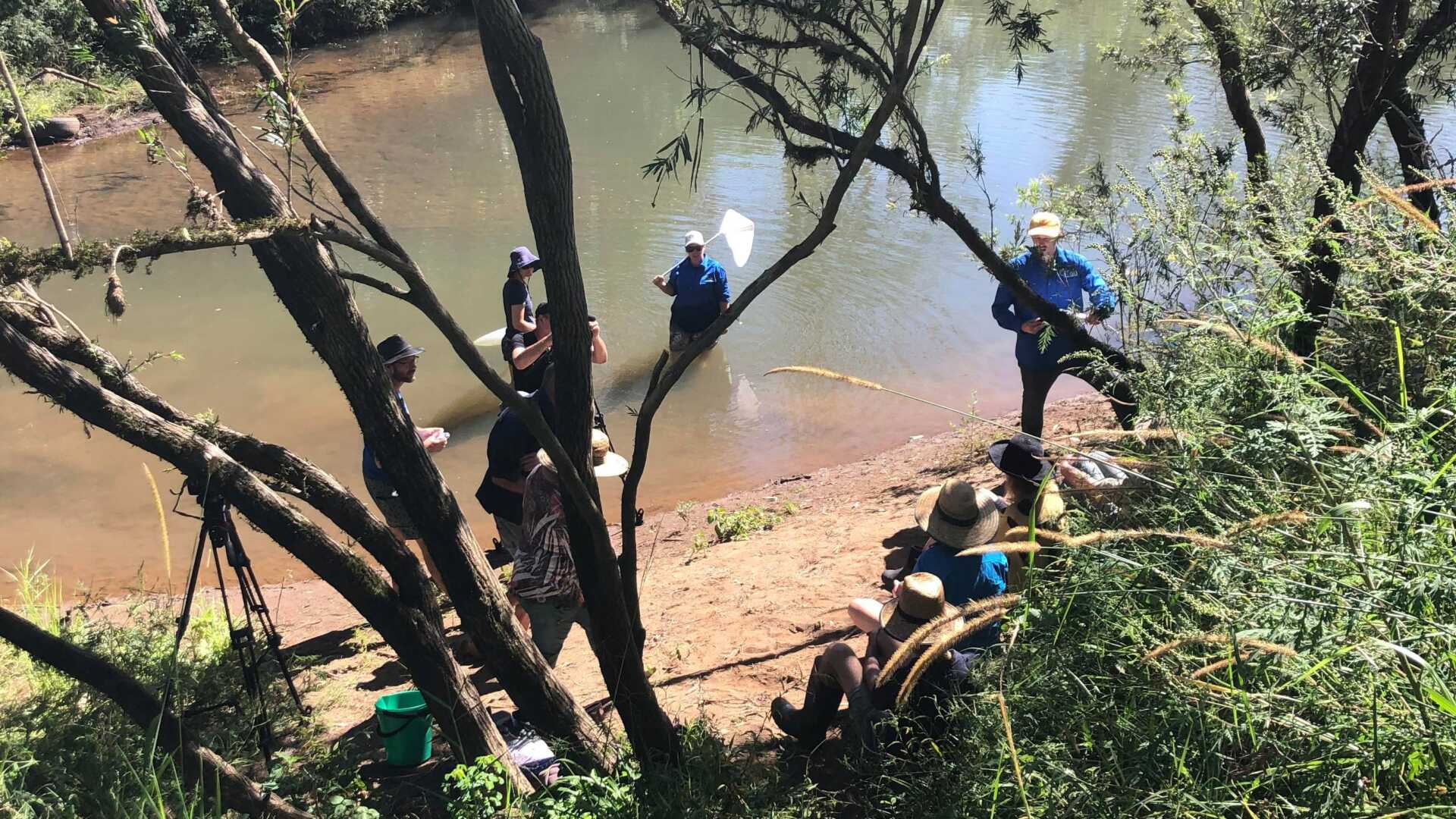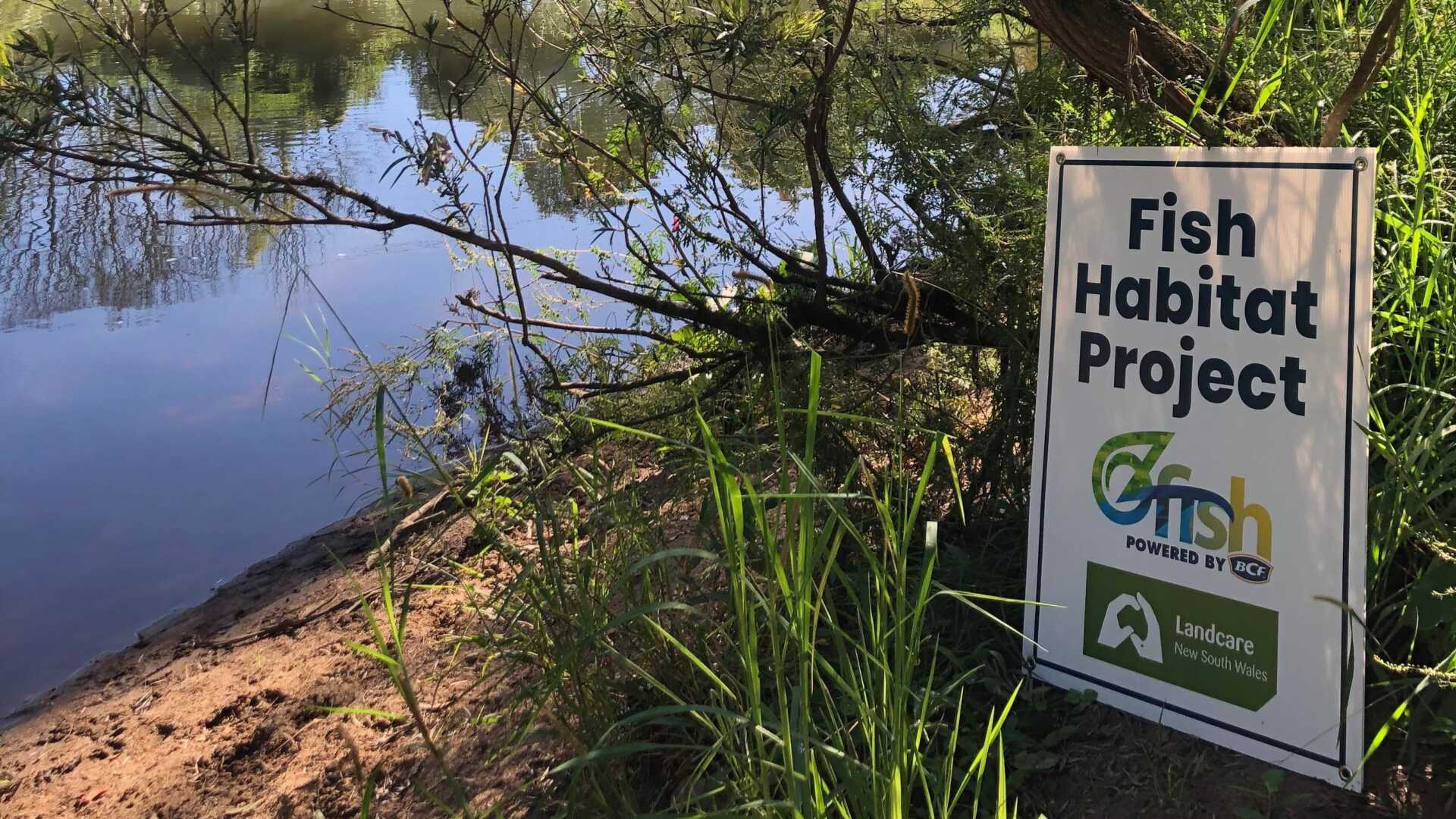In Search of the Prehistoric Lungfish: Exploring Tuntable Creek’s Secrets

OzFish Unlimited volunteers recently teamed up with Richmond Landcare in search of the elusive prehistoric lungfish after there were reported sightings in northern NSW.
Why is that significant? Well, the lungfish has not been in the area for millions of years and the endangered native species is only found in small sections of Queensland.
After the floods of 2022 caused major damage to the Tuntable Creek ecosystem, 25km north of Lismore, a resident said he saw a lungfish in the waterway and his clear description was backed up by another local so members of the Richmond Landcare group decided to investigate.
Richmond Landcare volunteer Emily Headlam reached out to OzFish, Australia’s fishing conservation charity, “to see if they might have the capacity to support us in doing some eDNA testing” to potentially get scientific verification that lungfish had returned to the area after the floods.
“If evidence of the fish is found here, it could lead to significant conservation actions and positively impact the wider community,” she said.
Lucas Kas, OzFish Senior Project Officer, said the sightings at the Terania Creek and Rocky Creek locations set the local community abuzz and they were able to get the project funded through their longstanding partnership with Landcare NSW – Driving Fish Habitat Action.
“Just like at a crime scene where we can see who’s been lurking around the place, we can do the same thing with animals,” he said.
“As an animal moves through the environment it leaves all these traces – skin flakes, mucus, all the other bodily secretions – and that mixes really easily in the water so all we have to do is come down, take a sample of the water, preserve it, and send it off to the lab to find out if there is a presence of Australian Lungfish in the creek.”
To say it’s been a while since the lungfish have been sighted in this area would be an understatement.
“The reason we’re making a big deal about lungfish potentially being sighted in this area is because they’ve only been found in two rivers in South East Queensland and that’s now been expanded due to a breed-out program,” Kas added.
“But never in NSW, well at least for a hundred million years! As there is some fossil evidence from back then.
“They’re really significant because they’re really rare but they’re also living fossils. They’re prehistoric creatures that have been around since before the dinosaurs and they basically represent an evolutionary stage that all land animals evolved from.
“They have changed very little from that time whereas everything else has evolved very far.”
While they are unfortunately few and far between, they are unique creatures that can live up to 117 years, grow to 1.5 metres, have enamel on their teeth and have limb-like fins.
The eDNA test results were recently finalised and although it indicated no sign of the lungfish from the sample areas that were tested, it does not mean that they are not possibly inhabiting other parts of the waterways in the area.
However, the study did detect various other aquatic species, such as the longfin eel, rainbowfish, Australian bass, carp and Australian smelt.
Although the lungfish remained undetected, this project brought the community together, fostering a deeper connection and understanding of the local environment. Community members also participated in water bug sampling, providing valuable insights into the overall water quality of the waterways in the area.
“It’s a great way that we can get a rough understanding of the health of any particular area,” Kas explained.
“You have all these different types of water bugs. That can be anything from mayflies, water beetles, snails, midge larvae, fly larvae, and all of these have different tolerances to levels of pollution and disturbance, and different needs from particular types of environments and water conditions.”
Each of these types of bugs has been assigned a sensitivity rating from previous research, the water bug surveying gives an indication of the environmental health of a particular area.
It can be really useful as a stand-alone metric and to compare again in the future to see how projects like restoring native vegetation are progressing.
The Richmond and Tuntable Landcare groups have been active participants in Lismore City Council’s Urban Landcare Program as they aim to enhance regional biodiversity.
The project is part of OzFish’s Driving Fish Habitat Action partnership with Landcare NSW, with funding support from the NSW Recreational Fishing Trusts and BCF – Boating, Camping, Fishing.





